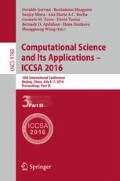Abstract
Seagrass distribution is controlled by light availability, especially at the deepest edge of the meadow. Light attenuation due to both natural and anthropogenically-driven processes leads to reduced photosynthesis. Reliability of satellite-based seagrass mapping under different water clarity that has different attenuation coefficient value is still not fully known. Understanding the minimum light requirements for growth is crucial when light conditions are insufficient to maintain a positive carbon balance, leading to a decline in seagrass growth and distribution. By comparing the seagrass-detected pixels at two different coastal locations with the corresponding depth from the nautical chart, the assessment of seagrass map derived from Landsat 8 OLI satellite data were performed. We presented the assessment of light penetration capability of Landsat 8 OLI bands in typical tropical coastal water of Malaysia, with special attention on the different water clarity that has different amount of light deprivation on the seagrass meadow.
Access this chapter
Tax calculation will be finalised at checkout
Purchases are for personal use only
References
Dennison, W.C., Orth, R.J., Moore, K.A., Stevenson, J.C., Carter, V., Kollar, S., Bergstrom, P.W., Batiuk, R.A.: Assessing water quality with submersed aquatic vegetation. Bioscience 43, 86–94 (1993)
Lee, K.S., Park, S.R., Kim, Y.K.: Effects of irradiance, temperature, and nutrients on growth dynamics of seagrasses: a review. J. Exp. Mar. Biol. Ecol. 350, 144–175 (2007)
Orth, R.J., Carruthers, T.J.B., Dennison, W.C., Duarte, C.M., Fourqurean, J.W., Heck Jr., K.L., Hughes, A.R., Kendrick, G.A., Kenworthy, W.J., Olyarnik, S., Short, F.T., Waycott, M., Williams, S.L.: A global crisis for seagrass ecosystems. BioScience 56, 987–996 (2006)
Bulthuis, D.A.: Effects of temperature on the photosynthesis–irradiance curve of the Australian seagrass, Heterozostera tasmanica. Mar. Biol. Lett. 4, 47–57 (1983)
Walker, D.I., McComb, A.J.: Seagrass degradation in Australian coastal waters. Mar. Pollut. Bull. 25, 191–195 (1992)
Short, F.T., Wyllie-Echeverria, S.: Natural and human-induced disturbance of seagrasses. Environ. Conserv. 23, 17–27 (1996)
Ralph, P.J., Tomasko, D., Seddon, S., Moore, K., Macinnis-Ng, C.: Human impact on seagrasses: contamination and eutrophication. In: Larkum, A.W.D., Orth, R.J., Duarte, C.M. (eds.) Seagrass Biology, Ecology and Conservation, pp. 567–593. Springer, Netherlands (2006)
Hossain, M.S., Bujang, J.S., Zakaria, M.H., Hashim, M.: The application of remote sensing to seagrass ecosystems: an overview and future research prospects. Int. J. Remote Sens. 26, 2107–2112 (2015)
Okuda, T., Suzuki, M., Numata, S., Yoshida, K., Nishimura, S., Adachi, N., Niiyama, K., Manokaran, N., Hashim, M.: Estimation of aboveground biomass in logged and primary lowland rainforests using 3-D photogrammetric analysis. For. Ecol. Manage. 203, 63–75 (2004)
Pour, A.B., Hashim, M.: Fusing ASTER, ALI and Hyperion data for enhanced mineral mapping. Int. J. Image Data Fusion 4(2), 126–145 (2013)
Lyzenga, D.R.: Remote sensing of bottom reflectance and water attenuation parameters in shallow water using aircraft and Landsat data. Int. J. Remote Sens. 2(1), 71–82 (1981)
Sagawa, T., Boisnier, E., Komatsu, T., Mustapha, K.B., Hattour, A., Kosaka, N., Miyazaki, S.: Using bottom surface reflectance to map coastal marine areas: a new remote sensing method. Int. J. Remote Sens. 31, 3051–3064 (2010)
Hashim, M., Misbari, S., Yahya, N.N., Ahmad, S., Reba, M. N., Komatsu, T.: An approach for quantification of submerged seagrass biomass in shallow turbid coastal waters. In: Proceeding of IEEE Geoscience and Remote Sensing Symposium (IGARSS), Quebec City, Canada, pp. 4439–4442 (2014)
Misbari, S., Hashim, M.: Change detection of submerged seagrass biomass in shallow coastal water. Remote Sens. 8(3), 200 (2016)
Hedley, J.D., Harborne, A.R., Mumby, P.J.: Technical Note: Simple and robust removal of sun glint for mapping shallow-water benthos. Int. J. Remote Sens. 26, 2107–2112 (2005)
USGS Website (2013). http://landsat.usgs.gov/Landsat8_Using_Product.php. Accessed Nov 2015
Gordon, D.M., Grey, K.A., Chase, S.C., Simpson, C.J.: Change to the structure and productivity of a Posidonia sinuosa meadow during and after imposed shading. Aquat. Bot. 47, 265–275 (1994)
Campbell, S.J., Miller, C.J.: Shoot and abundance characteristics of the seagrass Heterozostera tasmanica in Westernport estuary (south-eastern Australia). Aquat. Bot. 73(1), 33–46 (2002)
Acknowledgements
We gratefully acknowledge a Long-Term Research Grant Scheme (LRGS)-Seagrass Biomass From Satellite Remote Sensing-R.J130000.7309.4B094, the sponsors of this study which was conducted under the network of the Asian CORE Program of the Japan Society for the promotion of Science, “Establishment of research and education network on coastal marine science in Southeast Asia”, and the Ocean Remote Sensing Project for Coastal Habitat Mapping (WESTPAC-ORSP: PAMPEC III) of Intergovernmental Oceanographic Commission Sub-Commission for the Western Pacific supported by Japanese Funds-in-Trust provided by the Ministry of Education, Culture, Sports, Science and Technology in Japan.
Author information
Authors and Affiliations
Corresponding author
Editor information
Editors and Affiliations
Rights and permissions
Copyright information
© 2016 Springer International Publishing Switzerland
About this paper
Cite this paper
Misbari, S., Hashim, M. (2016). Light Penetration Ability Assessment of Satellite Band for Seagrass Detection Using Landsat 8 OLI Satellite Data. In: Gervasi, O., et al. Computational Science and Its Applications -- ICCSA 2016. ICCSA 2016. Lecture Notes in Computer Science(), vol 9788. Springer, Cham. https://doi.org/10.1007/978-3-319-42111-7_21
Download citation
DOI: https://doi.org/10.1007/978-3-319-42111-7_21
Published:
Publisher Name: Springer, Cham
Print ISBN: 978-3-319-42110-0
Online ISBN: 978-3-319-42111-7
eBook Packages: Computer ScienceComputer Science (R0)

